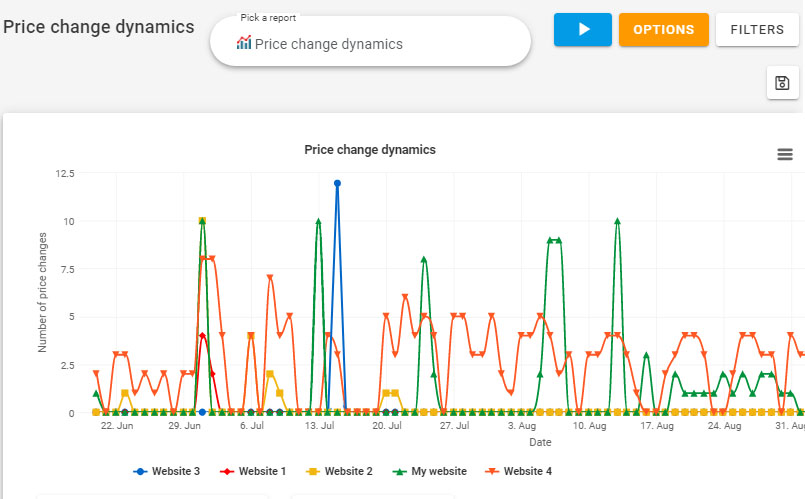Who follows whom – are your competitors’ price monitoring each other?
Starting a business now is easier than ever, but at the same time, that means that the competition is also fiercer than ever. One of the biggest struggles for today’s’ business is to find a way to be a step ahead of the competition. That goal can’t be reached unless you’re performing competitors’ price monitoring. Since competitors’ price monitoring stopped being a secret a long time ago, it’s very likely that your competitors are using it as well.
Is there any way to be completely sure of this, or everything needs to remain at the level of assumption?
Price2Spy was built with the purpose of competitors’ price monitoring, so let us quickly walk you through this process.
In fact, there is not a big mystery behind it. It’s about some obvious competitor moves by which you can tell whether they are monitoring each other.
But, let’s start from the beginning.
Who follows whom?
The question of all questions – how to know who’s monitoring whom?
The product history chart shows how websites are reacting to price drops of their competitors – when one website drops the price, other websites that are closely monitoring them follow by repricing their own products.

In this case Red site triggered the price drop, and Violet, Yellow and Green ones followed.
This leads to 3 conclusions:
- Red website is in this case
pricing leader. Other websites are following Red one and adjusting their prices
accordingly - Violet website uses some
kind of repricing automation – see how they quick they were to react when Red
site changed their price. - Green and Yellow websites
took longer to adjust their prices – most likely this means their repricing
process is not fully automated
This feature is especially useful for monitoring MAP/MSRP violations since the MAP price is also shown on the chart. Of course, you can select the monitoring period and the competitor websites that you would like to have included in the chart.
How the competitors’ price monitoring process is performed?
There are two ways in which competitors’ price monitoring can be done – automatically or manually.
In case a website monitors their competitors and reprices their products automatically the gap between the price change that started the chain reaction is shorter. In other words, the price change was spotted quick enough. If the website doesn’t have automated repricing, the gap is longer – the price change will be slower, or in irregular intervals.
Also, if the gap is consistent this means that the competitor is repricing products automatically. In case the gap is inconsistent, this means that the competitor is changing prices manually.
How frequently are they changing their prices?
Now that you know who’s monitoring whom, your next question should be how frequently are they changing their prices?
Price2Spy’s feature that will enable you to have more insights into your competitor’s actions is Price change dynamics.
With the Price change dynamics report you can see that the price changes are grouped in certain periods. This again indicates that the websites are closely monitoring one another and repricing products accordingly.
Let’s take one report as an example:

- The green website represents
you, and the other 4 (blue, red, yellow, and the orange one) represent your competitors; - Website 1 (red) is constantly
on 0 which means that they’re never changing prices – in other words, being
competitive is not so important to them; - Website 2 (yellow) is also
mostly on 0, but as you can see, there are some periodical spikes, i.e. once
per week or even less often; - Website 4 (orange) shows very
frequent activity – they’re changing the prices little by little, but those
changes are being done constantly; - Website 3 (blue) is an
example of a website that doesn’t change the prices at all, but then it makes a
drastic change, and only once – this is usually an indicator of
a strategic change in the way a competitor thinks.
In Conclusion
Being aware of your competitor’s actions should be your priority, and therefore, the first and most important step when creating a business strategy. However, it’s not enough that you’re monitoring the competition. Equally important fact is to know if they are also monitoring each other. In this post, we showed you how one of the most used Price2Spy’s features can help you with reaching that goal.
Besides these two, Price2Spy can offer you numerous features from which you can choose the ones that are the most suited for your business.
If you want to test them out, we invite you to start your free Price2Spy trial.
What metrics have you been using so far for competitor price monitoring? Share it with us in the comments below.



